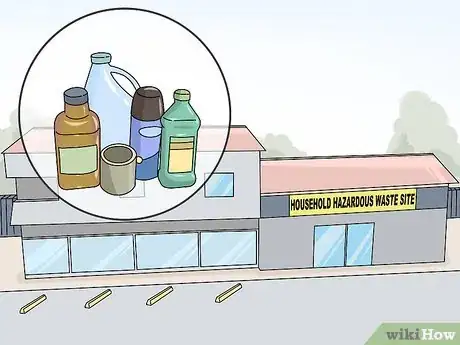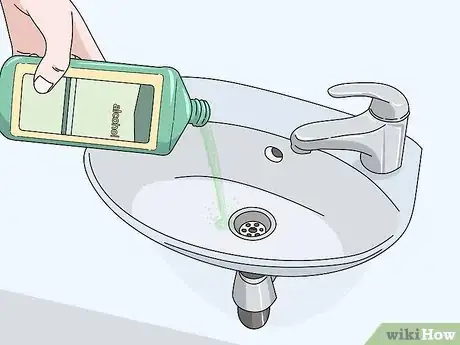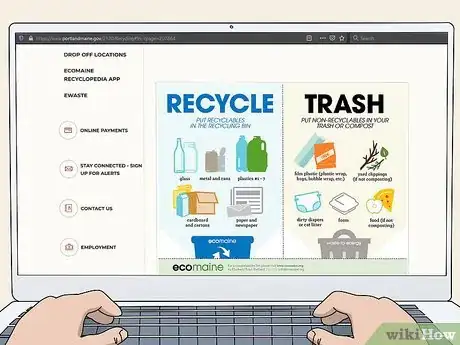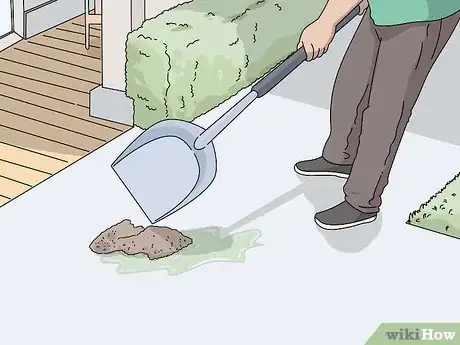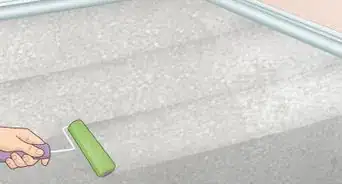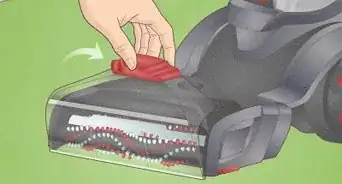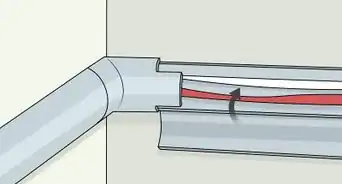This article was co-authored by wikiHow staff writer, Janice Tieperman. Janice is a professional and creative writer who has worked at wikiHow since 2019. With both a B.A. and M.A. in English from East Stroudsburg University, she has a passion for writing a wide variety of content for anyone and everyone. In her free time, you can find her working on a new crochet pattern, listening to true crime podcasts, or tackling a new creative writing project.
There are 7 references cited in this article, which can be found at the bottom of the page.
This article has been viewed 67,178 times.
Learn more...
Rubbing alcohol, also known as isopropyl alcohol, is super useful for cleaning and sanitizing different surfaces. Unfortunately, opened bottles are only good for 3 years.[1] While it’s a pretty common staple in a lot of households, this substance is generally considered hazardous household waste. With a few extra precautions, you can safely toss out or store any rubbing alcohol in your home without hurting the environment!
Steps
Getting Rid of Rubbing Alcohol Safely
-
1Check that the alcohol is in a sealed container. Make sure that the bottle has no leaks or cracks as you get it ready for transport. If the container isn’t labeled, use a separate label or permanent marker to write “rubbing alcohol” or “isopropyl alcohol” on the front.[2]
- You can purchase labels online or in an office supply store.
-
2Take the sealed container to a household hazardous waste site. Check online to see if there’s a drop-off center or collection facility for household waste, like rubbing alcohol. Make a plan to stop by during their hours of operation, where you can give them the sealed, labeled containers of rubbing alcohol.
- These plants will incinerate the rubbing alcohol safely so it doesn’t hurt the environment.
Advertisement -
3Flush any alcohol into a sanitary sewer system if it’s diluted. If your container contains less than 5% of rubbing alcohol, pour it into a utility sink, toilet, or other sanitary drain. After dumping the alcohol, pour a lot of water down the drain to dilute the alcohol.[3]
- You may want to wear eye glasses and gloves when you flush the rubbing alcohol.
- If you pour 1 cup (240 mL) of rubbing alcohol down the drain, be sure to flush it out with 10 to 20 cups (2,400 to 4,700 mL) of water afterwards.
- Never pour rubbing alcohol into a storm sewer.
- Many standard rubbing alcohol containers are over 50% concentrated, so this option might not work for everyone.[4]
-
4Throw out your rubbing alcohol if your local government recommends it. Visit the waste management or recycling portion of your city’s website to see if they have a list of items that are considered “trash” or “recyclable.” If you don’t see that kind of list on the website, see if there’s a local number that you can call for extra assistance.[5]
- Some websites have an encyclopedia or other type of guide that lets you search for different items.
Taking Proper Safety Precautions
-
1Keep your rubbing alcohol in a cool, dry place. Keep the alcohol in a sturdy, closed bottle or container in a place that doesn’t get a lot of direct light. Make sure that there are no ignition or heat sources near the rubbing alcohol that could cause an explosion in the long run.[6]
- A dark closet or cabinet is a great place to keep the rubbing alcohol.
-
2Absorb any spills with sand or soil. Wait for the sand or dirt to absorb the alcohol, then transfer it to a sealable, airtight container. Once you’ve done this, throw the container in the trash.
- If you want to be extra cautious, bring any container to the nearest hazardous waste plant.[7]
-
3Wash out any empty containers before recycling them. Rinse out the bottle with cold water so there’s no leftover alcohol or vapor inside. Once the container is completely clean, drop it off in your recycling bin.[8]
-
4Flush or wash off any rubbing alcohol from your skin and eyes. If you spill any on your skin, rinse the affected area and clean it off with soap and water. If you get some alcohol in your eyes, splash some water or saline for 20 minutes or so.[9]
- If you feel a lot of pain or irritation in the affected area, consider visiting a doctor or healthcare professional.
Tip: If you inhale rubbing alcohol by accident, go outside and breathe in some fresh air.
Things You’ll Need
Getting Rid of Rubbing Alcohol Safely
- Water
- Labels
- Permanent markers
- Sturdy container
Taking Proper Safety Precautions
- Sand or soil
- Airtight container
- Water
- Soap
- Saline solution
References
- ↑ https://blog.gotopac.com/2019/07/24/what-is-the-shelf-life-of-isopropyl-alcohol-ipa-does-it-expire/
- ↑ https://www.nj.gov/health/eoh/rtkweb/documents/fs/1076.pdf
- ↑ https://ehs.yale.edu/sites/default/files/files/sanitary-sewar-disposal.pdf
- ↑ https://www.cdc.gov/infectioncontrol/guidelines/disinfection/disinfection-methods/chemical.html
- ↑ https://www.portlandmaine.gov/2120/Recycling#!rc-cpage=207864
- ↑ https://www.nj.gov/health/eoh/rtkweb/documents/fs/1076.pdf
- ↑ https://www.nj.gov/health/eoh/rtkweb/documents/fs/1076.pdf
- ↑ https://www.who.int/news-room/questions-and-answers/item/alcohol-based-handrub-risks-hazards
- ↑ https://www.ehs.com/2015/02/isopropyl-alcohol-safety-tips/

